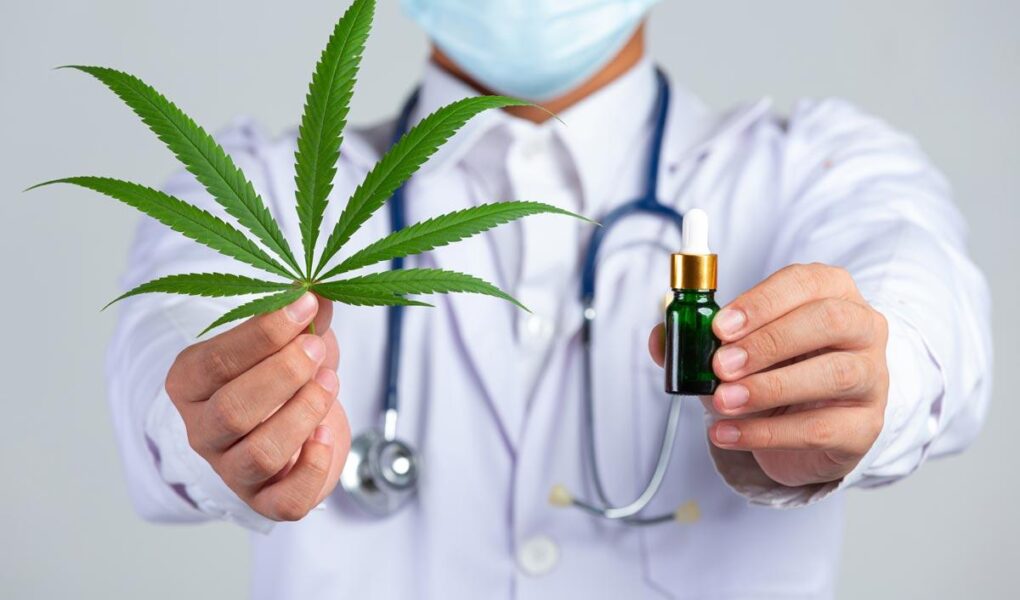In recent years, the conversation surrounding medical marijuana has transformed from taboo whispers to an open dialogue, capturing the attention of patients, healthcare professionals, and policymakers alike. As research continues to unfold, the plant once relegated to shadows now stands under the spotlight, revealing a complexity that extends far beyond recreational use. With increasing states and countries recognizing its medicinal potential, the benefits of medical marijuana are gaining recognition and prompting a reevaluation of long-held beliefs. This article explores the various advantages that medical marijuana offers, shedding light on its role in pain management, mental health, and overall wellness, as well as the ongoing efforts to integrate this ancient remedy into modern medicine. Join us as we delve into the science and stories behind medical marijuana, uncovering the potential it holds for patients seeking relief and a better quality of life.
Table of Contents
- Exploring the Therapeutic Potential of Medical Marijuana
- Understanding the Role of Cannabinoids in Pain Management
- Enhancing Quality of Life for Patients with Chronic Conditions
- Navigating Legal and Accessibility Challenges in Medical Marijuana Use
- Q&A
- Concluding Remarks
Exploring the Therapeutic Potential of Medical Marijuana
The therapeutic applications of medical marijuana are becoming increasingly recognized as research expands and societal attitudes evolve. Patients suffering from a variety of conditions have reported significant relief through its use. Some of the most notable benefits include:
- Management of Chronic Pain: Medical marijuana can effectively reduce pain associated with conditions like arthritis, fibromyalgia, and multiple sclerosis.
- Reduction of Inflammation: Certain cannabinoids possess anti-inflammatory properties, presenting a natural alternative to traditional pharmaceuticals.
- Anxiety and Depression Relief: Patients often use medical marijuana to alleviate symptoms of anxiety disorders and depression, often with fewer side effects than conventional medications.
- Support for Cancer Patients: Many find relief from nausea and vomiting associated with chemotherapy, as well as enhanced appetite.
Additionally, the benefits extend beyond physical symptoms. The holistic approach of medical marijuana can lead to improvements in overall quality of life. Below is a brief comparison of some common strains and their therapeutic uses:
| Strain | Primary Use | Effects |
|---|---|---|
| Indica | Chronic Pain Relief | Relaxation, Sedation |
| Sativa | Fatigue and Depression | Energy, Euphoria |
| Hybrid | General Wellness | Balance, Mild Effects |
Understanding the Role of Cannabinoids in Pain Management
Cannabinoids, the active compounds found in cannabis, have garnered attention for their potential to alleviate pain through various physiological pathways. These compounds interact with the body’s endocannabinoid system, which plays a crucial role in maintaining homeostasis. With receptors located throughout the body, particularly in the brain and immune system, cannabinoids can modulate pain perception, reducing both inflammation and discomfort. Notably, THC (tetrahydrocannabinol) and CBD (cannabidiol) are the most studied cannabinoids, each contributing uniquely to pain relief. THC is known for its psychoactive effects, which may distract from pain, while CBD is recognized for its anti-inflammatory properties, often making it a preferred option for those seeking non-psychoactive relief.
The versatility of cannabinoids offers a broad range of therapeutic options for individuals experiencing pain, whether acute or chronic. Physicians may tailor cannabis treatments to individual needs, considering factors such as type of pain, patient health, and potential interactions with other medications. Below are some potential benefits of cannabinoids in pain management:
- Reduced Inflammation: Cannabinoids can decrease inflammatory responses, aiding conditions like arthritis.
- Improved Sleep: By addressing discomfort, cannabinoids may enhance sleep quality, which is essential for recovery.
- Lowered Dependence on Opioids: Cannabis presents an alternative for patients aiming to reduce opioid use without compromising pain relief.
| Cannabinoid | Primary Benefit |
|---|---|
| THC | Psychoactive pain relief and appetite stimulation |
| CBD | Anti-inflammatory effects without psychoactive impact |
| CBC | Potential to inhibit pain and enhance overall cannabinoid effects |
Enhancing Quality of Life for Patients with Chronic Conditions
For individuals grappling with chronic conditions, the benefits of medical marijuana are becoming increasingly apparent. Many patients report significant relief from symptoms such as chronic pain, inflammation, and severe nausea. The natural compounds found in cannabis, particularly cannabinoids like THC and CBD, are known for their potential therapeutic properties. By offering an alternative treatment option, medical marijuana can enable patients to reduce reliance on more traditional pharmaceuticals, which often come with a long list of side effects.
Furthermore, enhancing emotional well-being is another crucial aspect of incorporating medical marijuana into treatment plans. Patients frequently cite improvements in mood, sleep quality, and overall life satisfaction. Some key advantages include:
- Reduction in anxiety and stress: Many users find that cannabis helps alleviate anxiety, contributing to a more tranquil state of mind.
- Improved appetite: Particularly beneficial for those undergoing treatments like chemotherapy, where appetite can dwindle.
- Enhanced social interactions: A more positive mood can enable individuals to feel more engaged and social, combating feelings of isolation.
| Condition | Symptom Relief |
|---|---|
| Chronic Pain | 80% |
| Inflammatory Disorders | 75% |
| Anxiety Disorders | 70% |
| Appetite Loss | 85% |
The incorporation of medical marijuana into patient care represents a significant shift towards recognizing the benefits of alternative therapies. With comprehensive education and guided usage, patients can explore how cannabis can tailor a holistic approach to managing chronic ailments, ultimately leading to an enriched quality of life.
Navigating Legal and Accessibility Challenges in Medical Marijuana Use
As the landscape of medical marijuana continues to evolve, patients and providers often encounter a complex web of legal and accessibility challenges. Each state has its own regulations regarding the use of medical marijuana, which can create confusion for individuals seeking to benefit from its therapeutic properties. For example, considerations include:
- State Legislation: The legal status of medical marijuana varies widely, with some states fully embracing its use while others impose significant restrictions.
- Physician Recommendations: Not all healthcare providers are familiar with prescribing medical marijuana, leading to potential gaps in patient access.
- Insurance Coverage: Most insurance plans do not cover medical marijuana, placing a financial burden on patients.
Additionally, accessibility poses a significant hurdle for many. Even in states where medical marijuana is legal, patients may face logistical challenges such as:
- Dispensary Availability: Access to dispensaries can be limited, particularly in rural areas, complicating the process for those in need.
- Transportation Issues: Patients without reliable transport may struggle to reach dispensaries.
- Cost Barriers: Without insurance coverage, the potential expense can deter individuals from seeking treatment.
| Challenge | Impact |
|---|---|
| Legal Confusion | Hinders patient awareness and access |
| Provider Reluctance | Limits opportunities for physician-patient discussions |
| Financial Barriers | Excludes low-income patients from accessing treatment |
Q&A
Q&A: Understanding the Benefits of Medical Marijuana
Q: What is medical marijuana?
A: Medical marijuana refers to the use of the cannabis plant or its extracts to treat various medical conditions. Unlike recreational use, which focuses on the psychoactive effects, medical marijuana is often prescribed for its therapeutic properties, leveraging compounds like THC (tetrahydrocannabinol) and CBD (cannabidiol).
Q: What medical conditions can be treated with medical marijuana?
A: Medical marijuana has been associated with treating a variety of conditions, including chronic pain, epilepsy, multiple sclerosis, nausea from chemotherapy, Crohn’s disease, and even anxiety disorders. However, its efficacy can vary from patient to patient.
Q: How does medical marijuana work in the body?
A: The cannabis plant contains cannabinoids that interact with the body’s endocannabinoid system, which plays a crucial role in regulating various physiological processes. This interaction can help alleviate pain, reduce inflammation, and even influence mood and memory.
Q: What are the potential benefits of using medical marijuana?
A: Many users report relief from chronic pain, improved sleep quality, and a reduction in anxiety and depression symptoms. Additionally, medical marijuana may help reduce the frequency of seizures in epilepsy patients and alleviate nausea during chemotherapy.
Q: Are there any side effects associated with medical marijuana?
A: Like any medication, medical marijuana can have side effects. Common ones include drowsiness, dizziness, dry mouth, and increased appetite. In some cases, particularly with high THC strains, patients may also experience anxiety or paranoia. It’s essential for patients to consult with healthcare providers to discuss potential side effects.
Q: How is medical marijuana prescribed?
A: In regions where it’s legal, patients typically obtain a recommendation from a healthcare professional who is knowledgeable about medical cannabis. Patients must provide medical history and undergo evaluations to determine if medical marijuana is an appropriate treatment option for their condition.
Q: Is medical marijuana safe for everyone?
A: While many people benefit from medical marijuana, it may not be suitable for everyone. Individuals with certain medical histories, such as those with specific heart conditions or a history of substance abuse, should approach its use with caution. Consulting with a medical professional before starting treatment is crucial.
Q: How does medical marijuana compare to traditional medications?
A: For some patients, medical marijuana offers a more natural alternative to traditional pharmaceuticals, which often come with a range of side effects. However, the effectiveness and appropriateness of medical marijuana can vary widely, and it should be considered as part of a broader treatment strategy based on individual needs and circumstances.
Q: What is the legal status of medical marijuana?
A: The legal status of medical marijuana varies significantly by jurisdiction. In some areas, it is fully legalized for medical use, while in others, it may be tightly regulated or illegal. It’s essential for patients to understand local laws and obtain the necessary documentation before pursuing treatment.
Q: What should patients consider before trying medical marijuana?
A: Patients should consider their health history, potential interactions with other medications, and the specific benefits and risks associated with medical marijuana. It’s advisable to have an open discussion with a healthcare provider to develop a comprehensive treatment plan tailored to individual needs.
Here, we’ve created a neutral and informative Q&A format that addresses common queries about medical marijuana, its benefits, and considerations for potential users.
Concluding Remarks
As we conclude our exploration of the myriad benefits of medical marijuana, it is clear that this once-stigmatized plant holds significant promise for patients seeking relief from a variety of ailments. From chronic pain management to alleviating the symptoms of anxiety and nausea, medical marijuana is changing the landscape of healthcare for many individuals. As research continues to unfold and public perception evolves, the potential for this versatile therapy only expands.
In the pursuit of health and well-being, it is crucial to remain informed and open-minded about all available options. Each patient’s journey is unique, and what works for one may not work for another. Therefore, engaging in thoughtful dialogue with healthcare providers is essential for making informed decisions regarding treatment.
Ultimately, the narrative surrounding medical marijuana is one of hope, healing, and the ongoing quest for better health solutions. As we navigate this evolving conversation, let us remain committed to understanding the full scope of its implications—both the benefits and the challenges that come with integrating this treatment into modern medicine. The future of medical marijuana is bright, and its potential continues to inspire those seeking alternative paths to health.



